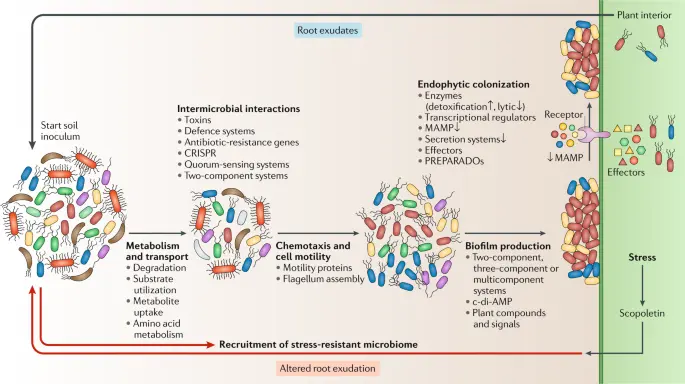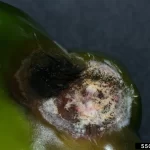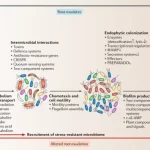Plant Microbiome 101
Introduction to a Plant Microbial Universe
As a hydroponic grower, you might wonder what’s happening beyond the visible spectrum of your plants. Especially today, when microbial inoculants are on the rise. A great starting point is a review paper by Pankaj Trivedi and a team of international authors published in the Nature Journal. It explains the world of tiny microbes and how they are key to plant health and productivity. Let’s dive into the insights from this review and connect the potential microbes in your hydroponic system. For conventional soil growers, this blog will still be important to you as we understand the microbiome-plant connection.
Key Terms:
Relative Abundance: a fancy way of talking about how much of one thing is compared to everything else in a group. It’s like your growing system; if you have 50 lettuce, 25 spinach and 25 basil, the relative abundance is 50% lettuce, 25% spinach and 25% basil of the 100 plants.
Rhizosphere: The area just outside of the roots and the root surface. Generally dictated by the root, it can be also seen as the zone of root activity.
Root Endosphere: The area inside the roots; only specific microorganisms can go through the tissue and colonize here.
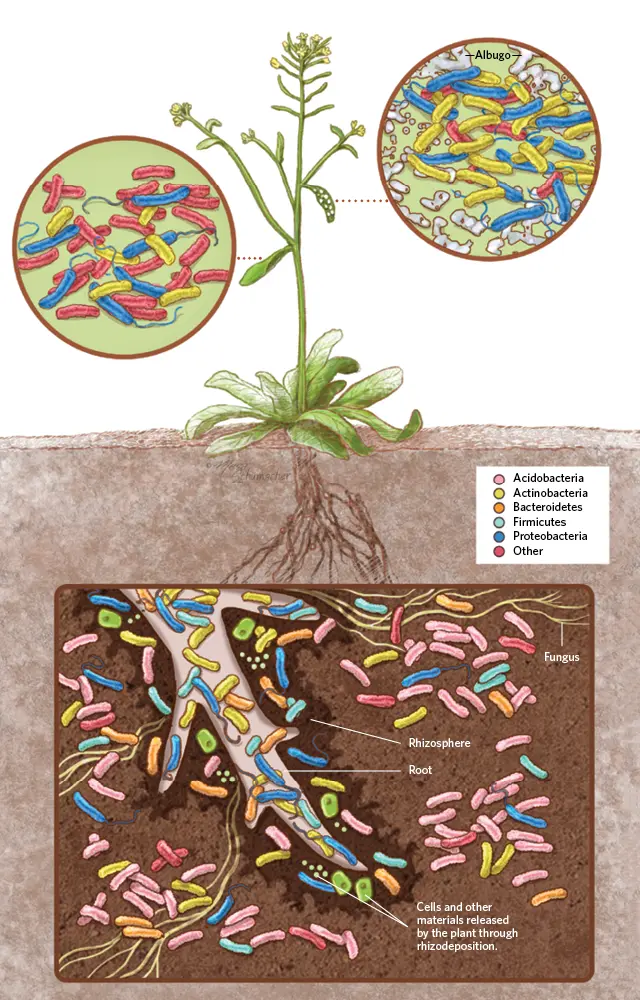
Want to see what is in your system? You can talk to us here:
The Plant Microbiome: More Than Just Dirt or Substrate
The term “microbiome” may conjure images of soil-dwelling organisms, but even in the soilless systems of hydroponics, microbes play a crucial role. The microbiome describes all the microbes in the system, both good and bad. They form relationships with plants, influencing nutrient uptake, growth rates, and disease resistance, or even being the disease-causing pathogen. Trivedi’s paper illustrates the intricate dance between plants and their microbial partners, a relationship we can leverage in any growing system.
The Holobiont: A Unified Force in Hydroponics
In the complex world of plant-microbe relationships, the term “holobiont” emerges as a central concept. This term refers to the plant and its entire microbial community as a single entity, a unified collective where every member, from the tiniest bacteria to the plant itself, contributes to the whole’s survival and success.
In hydroponics, you’re not just growing plants; you’re engineering an entire ecosystem (pH, temperature, light, nutrients, etc). Understanding the holobiont concept lets you see your hydroponic system as a living, breathing entity. It’s about nurturing the whole community, ensuring that every microbial inhabitant has what it needs to play its part in supporting your plants.
Conventional soil growers can easily understand this, especially in the living soil concept of nurturing the soil for plant productivity.
Core Microbiota: The Essential Inhabitants
Diving deeper into the microbiome, we encounter the “core microbiota,” the MVPs of the microbial world. These microbes are consistently found/associated with a specific plant regardless of where they are grown. They play essential roles in its growth and health from seed to maturity to death. They’re like the permanent residents of the microbial metropolis, whereas other microbes might just be passing through.
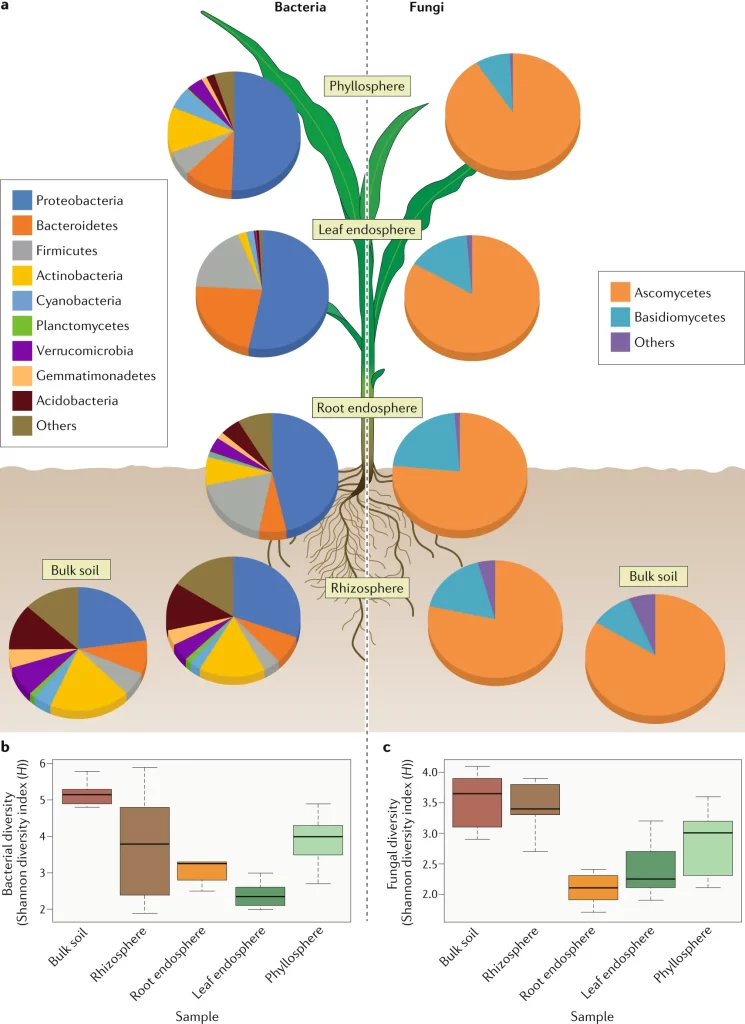
Applying Core Microbiota Knowledge in Hydroponics:
- Identifying Key Players: Using lab service to identify the core microbes for your particular plants. These are the ones you want to ensure are present and thriving in your hydroponic system. It is important to note that sequencing is the only way to identify all as it captures all DNA data. PCR or plating methods can only capture one target at a time. It is important to know if your inoculants can colonize the environment they are in, for both soil, inorganic or organic substrate, or water.
- Creating Microbe-Friendly Environments: Adjust your hydroponic setup to promote the growth of these core microbes–this could mean tweaking nutrient solutions, pH, and even the material of your growing platforms. Understanding the system before adding your microbial inoculant, compost tea, or other additives for adjusting microbes is crucial. You would not change your pH without first measuring it.
- Monitoring for Balance: Monitor your system to ensure the core microbiota remains healthy. A balance between various microbial populations is crucial for maintaining the overall health of the holobiont.
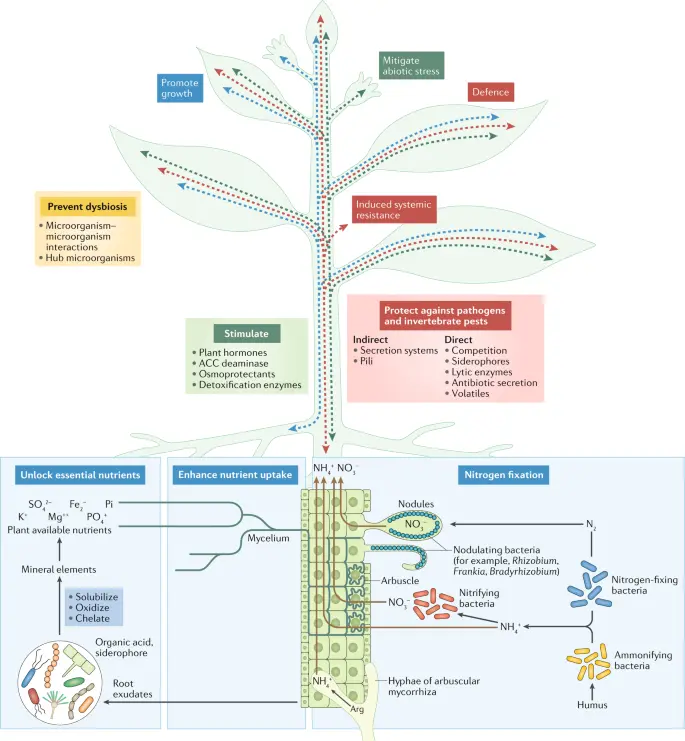
Microbial Interactions: The Hydroponic Advantage
Hydroponic systems, with their controlled environments, offer a unique opportunity to manage these microbial communities. According to the review:
- Community Assembly: The paper explains how microbial communities around plants aren’t random; they’re structured and influenced by the plant’s own genetics and the environment. In hydroponics, you control the environment, which means you can influence these communities more directly than in soil.
- Plant Health: Microbial interactions can make plants more resistant to diseases, which is vital for hydroponic growers who often deal with closed systems where diseases can spread rapidly.
- Nutrient Acquisition: Certain microbes can help plants absorb more nutrients or even provide nutrients themselves. Since nutrients flow directly into the system, increasing nutrient uptake will be the next step for efficiency.
Microbial Interactions: The Soil Advantage
Soil isn’t just dirt—it’s a bustling city for microbes that profoundly affect plant health. Therefore, here is how the soil’s natural ecosystem offers advantages:
- Rich Biodiversity: The already existing diverse microbial life in the soil creates a robust environment for plants, offering a wide range of interactions that already are in a relationship with the plant.
- Natural Disease Resistance: The complexity of soil microbiota can help plants fend off diseases by outcompeting harmful pathogens or even producing natural antibiotics.
- The Real Organic Nutrient Processing: Soil microbes excel at breaking down organic matter, transforming it into nutrients in a way that plants can easily use, enhancing nutrient uptake naturally. We are talking not just organic matter (carbon cycle) but also nitrogen and phosphorous cycles and other essential metals.
By understanding and verifying the intricacies of soil’s microbial life, even hydroponic systems can try to replicate its dynamic balance to foster plant health and productivity.
Conclusion
Trivedi’s paper isn’t just about understanding the plant microbiome; it’s a roadmap for the future of farming, where microbe management could lead to healthier plants and more sustainable practices. For hydroponic growers, this means embracing the hidden world of microbes to unlock the full potential of your plants, just like how our soil-growing counterparts are enjoying the benefits of rich, diverse soil.
By integrating the complex findings of this research into your hydroponic strategy, you can lead the charge in a new era of high-tech, high-yield, and high-efficiency farming.
If you would like to read the review yourself, there is an online version available to read here.
In the next blog, we will dive deeper into the interactions and benefits of microbiomes to plants.
Banner image from Trivedi et al. 2020. https://www.nature.com/articles/s41579-020-0412-1
References
Trivedi, P., Leach, J.E., Tringe, S.G. et al. Plant–microbiome interactions: from community assembly to plant health. Nat Rev Microbiol 18, 607–621 (2020). https://doi.org/10.1038/s41579-020-0412-1
![]()
David Santos is the COO/CMO of Healthy Hydroponics InnoTech


